20 Best Keto Veggies List & Which Vegetables to Avoid on the Keto Diet!
This post may contain affiliate links. All opinions shared are my own. As an Amazon Associate I earn from qualifying purchases. Click to view our full disclosure.
All content is created by humans – not AI.
In this guide we’ll show you the best keto veggies to include in a low-carb diet, plus we’ll take a look at the wide variety of nutrients they contain.
We’ll also share some tips for preparing them and some ways to include them in your day-to-day menu.
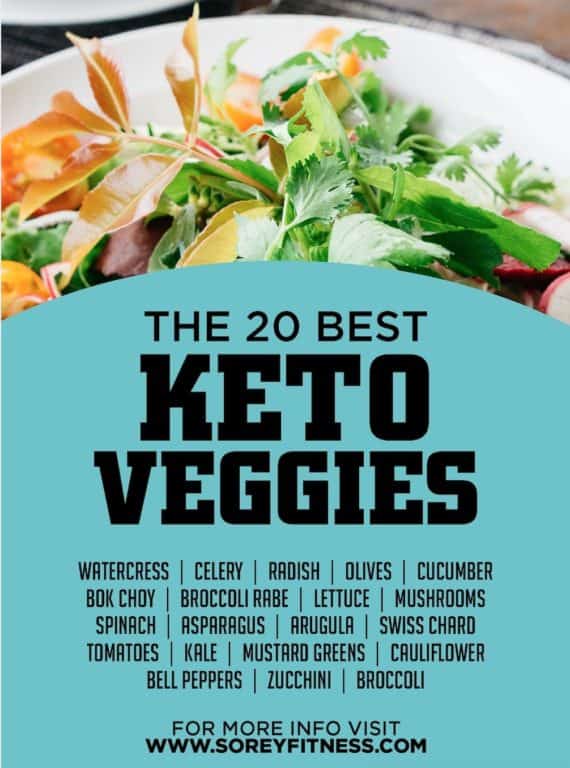
What is Keto?
The aim of a ketogenic diet is to put your body into a metabolic state called ‘ketosis’. When you’re in ketosis, your body stops using glucose for fuel and starts using ketones instead. Ketones are produced from fat by the liver – so this type of diet is great for weight loss. It also has the effect of reducing your appetite. This means that you can lose weight without the hunger that usually goes with it!
To reach ketosis, you need to drastically reduce your consumption of carbs. Your carb intake should be no more than 5% of your daily calories. The main source (65-75% of your dietary calories) should be from healthy, nutritious fats. The rest (20-25%) should come from protein.
You can also grab our favorite keto fat bombs here!
The Importance of Keto Veggies
When we think of carbs, many of us focus on foods like bread and pasta. But vegetables have carbs too, so it’s important to know just how much they contain.
As a general rule, the best keto vegetables are those that are LOW in carbs, but HIGH in nutrients. These tend to be vegetables that grow above ground, with leafy greens being the best of all.
Vegetables that grow underground – known as root vegetables or tubers – tend to be higher in carbohydrates.
A healthy meal plan should include 3 to 5 vegetable servings each day. By using the guide below, you will be able to meet this goal while also staying within your limit for carbs.
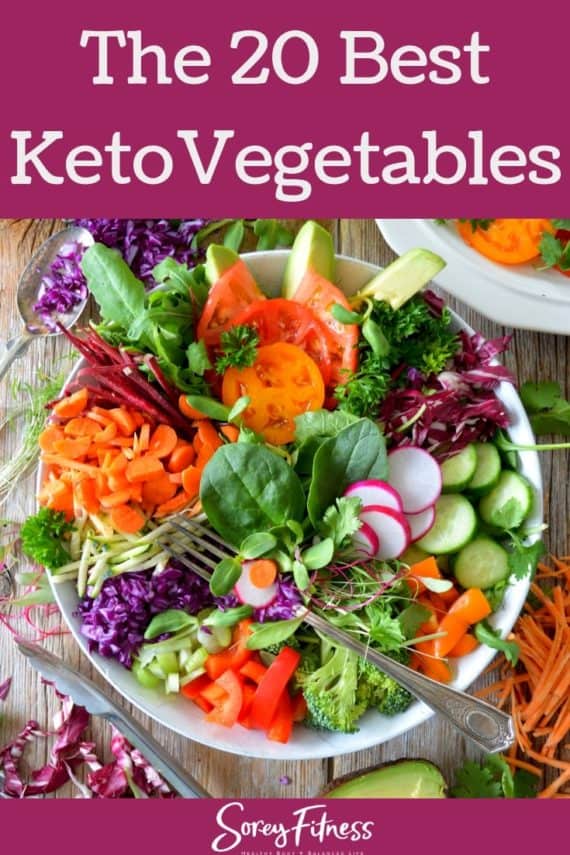
Here’s a Quick Table of the Best Keto Vegetables
These numbers are just estimates using a serving size of approximately 2/3 cup of each vegetable.
Each option is under 8 grams of net carbs. We also breakdown the benefits of the top 20 keto vegetables below.
| Vegetable Name | Total Carbs (g) | Fiber (g) | Net Carbs (g) |
| Broccoli Rabe | 2.85 | 2.7 | 0.15 |
| Watercress | 1.29 | 0.5 | 0.79 |
| Bok Choi | 2.18 | 1 | 1.18 |
| Celery | 2.97 | 1.6 | 1.37 |
| Spinach | 3.63 | 2.2 | 1.43 |
| Mustard Greens | 4.67 | 3.2 | 1.47 |
| Asparagus | 3.88 | 2.1 | 1.78 |
| Radish | 3.4 | 1.6 | 1.8 |
| Avocado (also healthy fat & really a fruit) | 8.64 | 6.8 | 1.84 |
| Arugula | 3.65 | 1.6 | 2.05 |
| Zucchini | 3.11 | 1 | 2.11 |
| Swiss Chard | 3.74 | 1.6 | 2.14 |
| Mushrooms | 3.26 | 1 | 2.26 |
| Tomato | 3.89 | 1.2 | 2.69 |
| Olives | 6 | 3.2 | 2.8 |
| Eggplant | 5.88 | 3 | 2.88 |
| Bell Pepper | 4.6 | 1.7 | 2.9 |
| Cauliflower | 4.97 | 2 | 2.97 |
| Bamboo Shoots | 5.2 | 2.2 | 3 |
| Cabbage (White) | 5.37 | 2.3 | 3.07 |
| Cucumber | 3.63 | 0.5 | 3.13 |
| Jalapeno Pepper | 6.5 | 2.8 | 3.7 |
| Artichoke Hearts | 5.38 | 1.5 | 3.88 |
| Broccoli | 6.64 | 2.6 | 4.04 |
| Bean Sprouts | 5.94 | 1.8 | 4.14 |
| Fennel | 7.3 | 3.1 | 4.2 |
| Okra | 7.45 | 3.2 | 4.25 |
| Green Beans | 6.97 | 2.7 | 4.27 |
| Turnips | 6.43 | 1.8 | 4.63 |
| Snow Peas | 7.55 | 2.6 | 4.95 |
| Brussels Sprouts | 8.95 | 3.8 | 5.15 |
| Kale | 8.75 | 3.6 | 5.15 |
| Cabbage (Red) | 7.37 | 2.1 | 5.27 |
| Pumpkin | 7 | 1 | 6 |
| Rutabaga | 8.62 | 2.3 | 6.32 |
| Carrots | 9.58 | 2.8 | 6.78 |
| Celeriac | 9.2 | 1.8 | 7.4 |
| Onion | 9.34 | 1.7 | 7.64 |
You may also like our favorite keto snacks!
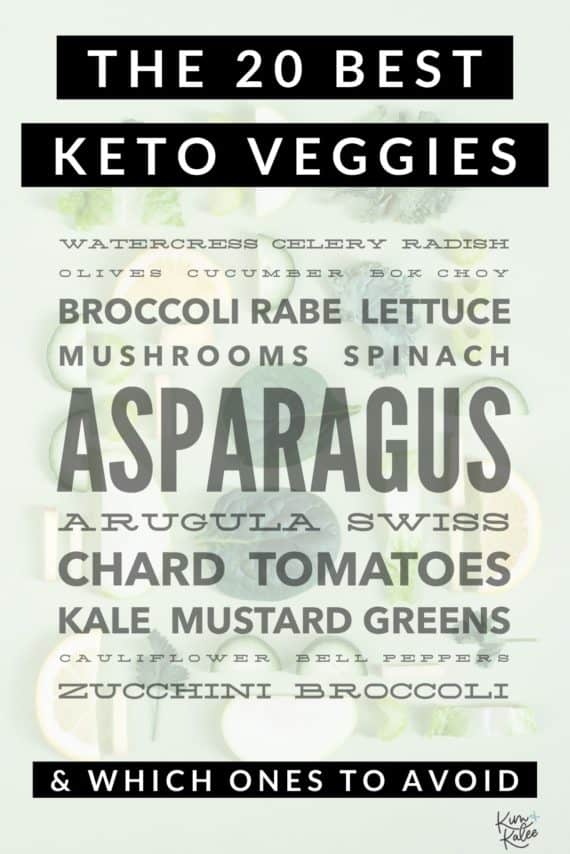
The 20 Best Keto Vegetables
These keto veggies are listed in order, from those with the least carbs per gram to those with the most. Our list is based off the amount of net carbs and the benefits of each vegetable.
WATERCRESS
With 1.29g carbs per 100g, peppery-tasting watercress is a great keto veggie. It’s a good source of vitamins A, C, and E and contains significant amounts of iron and calcium.
It has quite a strong flavor, so try mixing it with mild-tasting leaves to create a nutritious salad.
CELERY
A stick of succulent celery contains just 1g of carbs, plus vitamins C and K, potassium, folate, and fiber.
You can eat it cooked or raw and for a stronger flavor choose the inner sticks, which are darker in color.
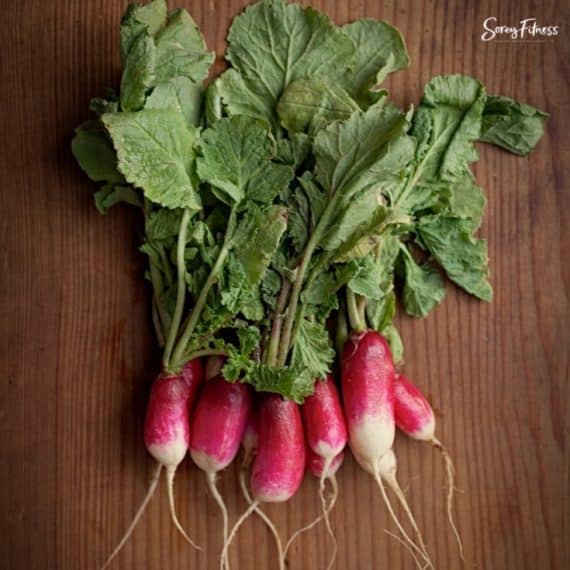
RADISH
One large radish contains less than 1/2g carbs. A member of the mustard family, radishes are crunchy, peppery and make a great addition to salads. Want them even crunchier? Then just soak them in iced water for a couple of hours before eating.
Radishes are rich in potassium and folic acid and are a good source of vitamin B6, calcium, magnesium, and riboflavin. Once prepared, their nutritional value starts to decline. So be sure to prepare them just before eating.
OLIVES
Olives are high in healthy fats and low in carbs, making them a nice keto treat. High in vitamin E and other antioxidants, 10 average sized olives contain just 1.5 g carbs.
CUCUMBER
With a water content of 95% and a carb content of 3.63g per 100g (with peel), cucumbers have anti-inflammatory properties and provide some hydration.
In addition, they provide fiber, vitamin C, vitamin K, some B vitamins, copper, potassium, and manganese.
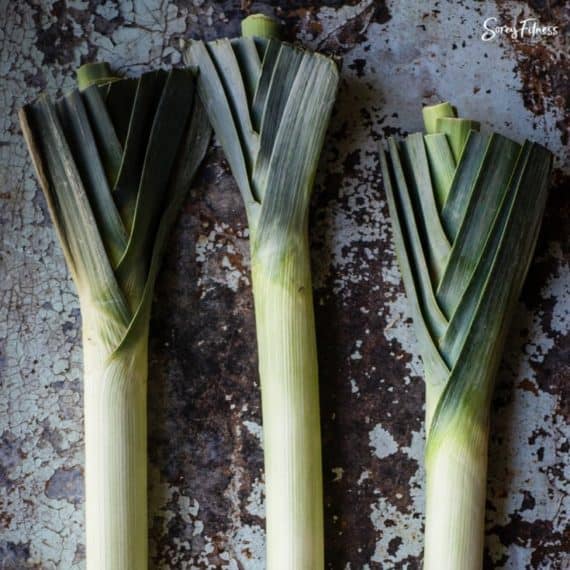
BOK CHOY
Also known as pak choi, this Chinese cabbage contains 2.18g carbs per 100g. It’s also loaded with protein, fiber, and virtually all of the essential vitamins and minerals.
Revered for its anti-inflammatory properties, bok choy has a sweet, mild flavor. So it’s ideal for combining with the stronger tasting leaves on our list of keto veggies!
Bok choy is great in salads, but try stir-frying it for the best flavor!
BROCCOLI RABE
Also known as broccoli raab or rapini, this slightly bitter cruciferous veggie is packed with vitamins A, C, and K, plus potassium, calcium, folate, and iron. It contains 2.85g carbs per 100g.
The flower heads, stem, and leaves can all be eaten like broccoli. But broccoli rabe isn’t related to broccoli at all – it’s related to turnips!
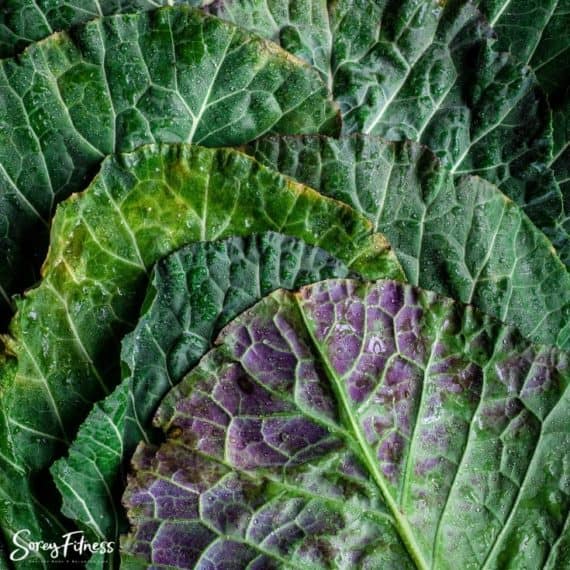
LETTUCE
Iceberg lettuce contains 2.87g carbs per 100g, plus small amounts of vitamins and minerals.
Romaine lettuce is far richer in nutrients, containing vitamin A, folate, potassium, and calcium. But at 3.29g per 100g, it’s also higher in carbs.
MUSHROOMS
One cup of whole white mushrooms contains 3.13g carbs. Mushrooms are one of the very few non-animal sources of vitamin D and also contain B vitamins, selenium, potassium, copper, fiber, and protein.
Rich in flavor, these keto vegetables make the perfect low-carb dish when sautéed with butter, garlic, and thyme.
SPINACH
Spinach is a great source of caretonoids, Vitamins C and K, folic acid, iron, and calcium… plus it contains just 3.63g carbs per 100g.
For a keto-friendly side dish, just saute’ spinach and add cream, cream cheese, and Parmesan.
ASPARAGUS
Offering vitamins A, C, E and K – plus folate, fiber, potassium, chromium, and calcium – asparagus contains 1/2g carbs per stalk.
Very young asparagus needs little preparation, but for larger, older spears, simply snap off the woody stem.
Asparagus is delicious steamed, roasted, or boiled. Try wrapping it in bacon or prosciutto for a real boost of flavor!
ARUGULA
Also known as rocket, arugula contains 3.65g carbs per 100g. High in calcium and iron, arugula also contains vitamins A, C, and K, plus several B vitamins.
While it gives a peppery kick to salads, it’s also a great keto meal when served with cheesy scrambled eggs!
SWISS CHARD
With 3.74g carbs per 100g, swiss chard tastes similar to spinach but with a stronger flavor. It contains lots of important nutrients, including vitamins A, C, and K as well as magnesium, potassium, iron, and fiber.
The stalk can be quite thick, so for best results, cook it separately from the leaves. Try sautéing with garlic, bacon, and slivered almonds. Delicious!
TOMATOES
Technically a fruit – but used as a vegetable – tomatoes contain 3.89g carbs per 100g. They are rich in the antioxidant lycopene – which intensifies during cooking – and are an excellent source of vitamin C.
Tomatoes also provide vitamin K, potassium, and folate.
For a keto-friendly soup, mix pureed, cooked tomatoes with garlic, cream, and seasonings.
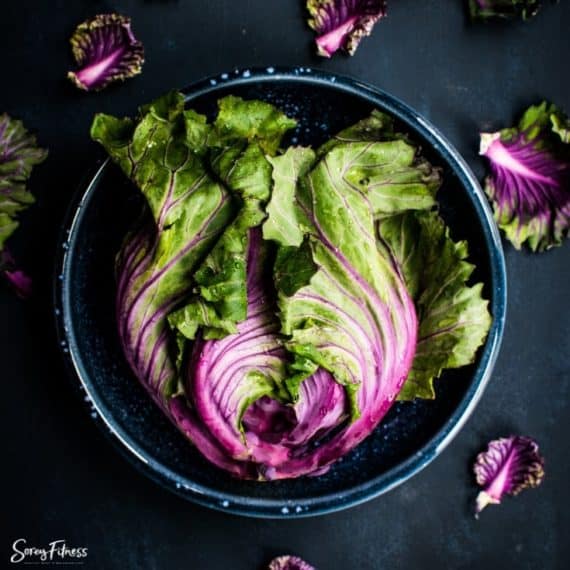
KALE
Like other leafy greens on our list of keto veggies, kale is nutrient-dense, containing vitamins A, B6, and C, plus manganese, calcium, and copper. It’s also one of the world’s best sources of vitamin K.
It contains 4.42g carbs per 100g and can be lightly roasted to create kale chips, or added to a tasty, cheesy omelet.
MUSTARD GREENS
Antioxidant-rich mustard greens have a peppery flavor which most people find stronger than kale.
High in fiber, they contain Vitamins A, C and K, plus 26% of your daily requirement of folate.
Saute’ with oil and garlic for the best flavor.
CAULIFLOWER
Rich in vitamins and minerals – and providing 77% of our daily vitamin C requirements – cauliflower contains 4.97g carbs per 100g. It’s a good source of choline, protein, thiamin, vitamin B6, and fiber.
Cauliflower is a hugely popular alternative to potatoes and other starchy foods in keto diets. It can be mashed and served in place of mashed potato, and you can switch regular rice for cauliflower rice!
It makes wonderfully creamy soup and is also delicious sliced, tossed in oil and roasted.
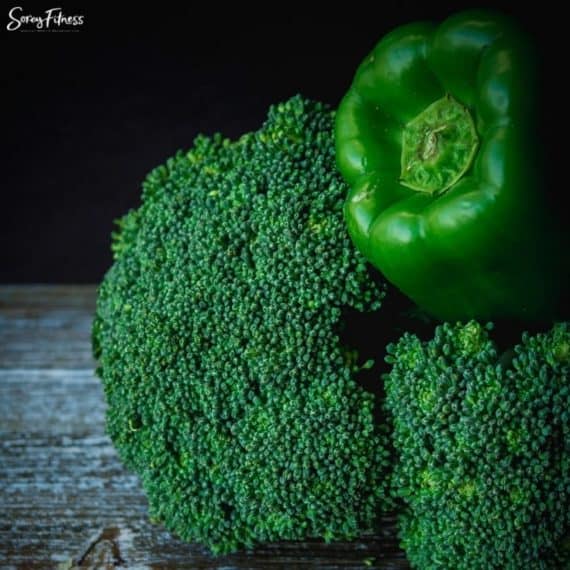
BELL PEPPERS
A medium green bell pepper contains around 5.5 g carbs, whereas the more nutritious red variety is higher in carbs, at just over 7g per medium pepper.
Peppers are a good source of vitamins A and C, potassium, folic acid, and fiber.
For a perfect keto meal, bake a whole bell pepper, stuffed with cauliflower rice and cooked ground beef.
ZUCCHINI
Zucchini are often used to make ‘zoodles’ (zucchini noodles), a substitute for pasta. One medium sized zucchini contains around 6g of carbs, plus a variety of vitamins and minerals. Cooked zucchini is an especially good source of vitamin A.
Try making zucchini ‘fries’ by cutting into sticks, coating in Parmesan cheese and baking.
BROCCOLI
Broccoli contains 6.64g carbs per 100g and can be eaten raw or cooked. A great source of protein and fiber, it’s also packed with vitamins A, C, E and K, plus B vitamins, iron, and calcium.
You can create a delicious broccoli mash by combining cooked broccoli with butter, garlic, and chopped parsley.
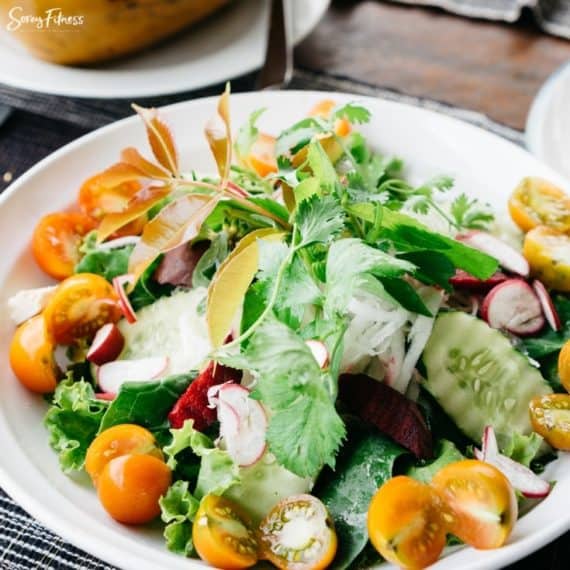
Mixing in Keto Vegetables into Your Diet
You don’t have to just eat these veggies on their own. There are so many different ways to mix them into your diet!
I know we mentioned soup earlier, but there are all kinds of options out there.
For example, we love adding fresh greens like spinach into our smoothies!
You can also top a keto pizza with fresh veggies for an extra punch of fiber. We’re also crazy about this keto cauliflower ziti!
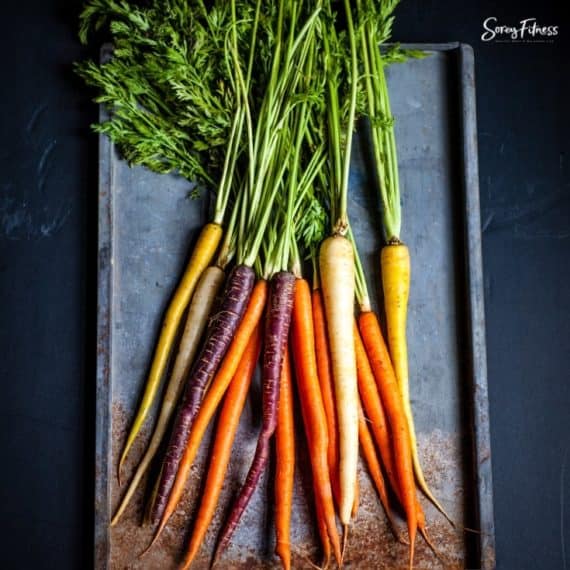
Keto Vegetables to Limit
If you choose to eat any of the following veggies, you should aim to have just one serving a day. In order to keep your carb count low, stick to leafy greens for the rest of the day.
- Carrots (9.58g per 100g)
- Butternut squash (11.69g per 100g)
- Onions (9.34g per 100g)
Keto Veggies to Avoid
These veggies are all relatively high in carbohydrates and best avoided in a keto diet:
- Sweet potatoes
- White potatoes
- Yams
- Parsnips
- Green peas
- Leeks
- Corn
- Legumes
What are your favorite keto vegetables?
Get our List of Delicious Fat Bombs Here!
Sources for this article are:
United States Department of Agriculture; National Nutrient Database for Standard Reference
You may also like:
Want more tips & recipes? Read our Keto Quick Start Guide for Beginners!
Love this list? Save it for later!
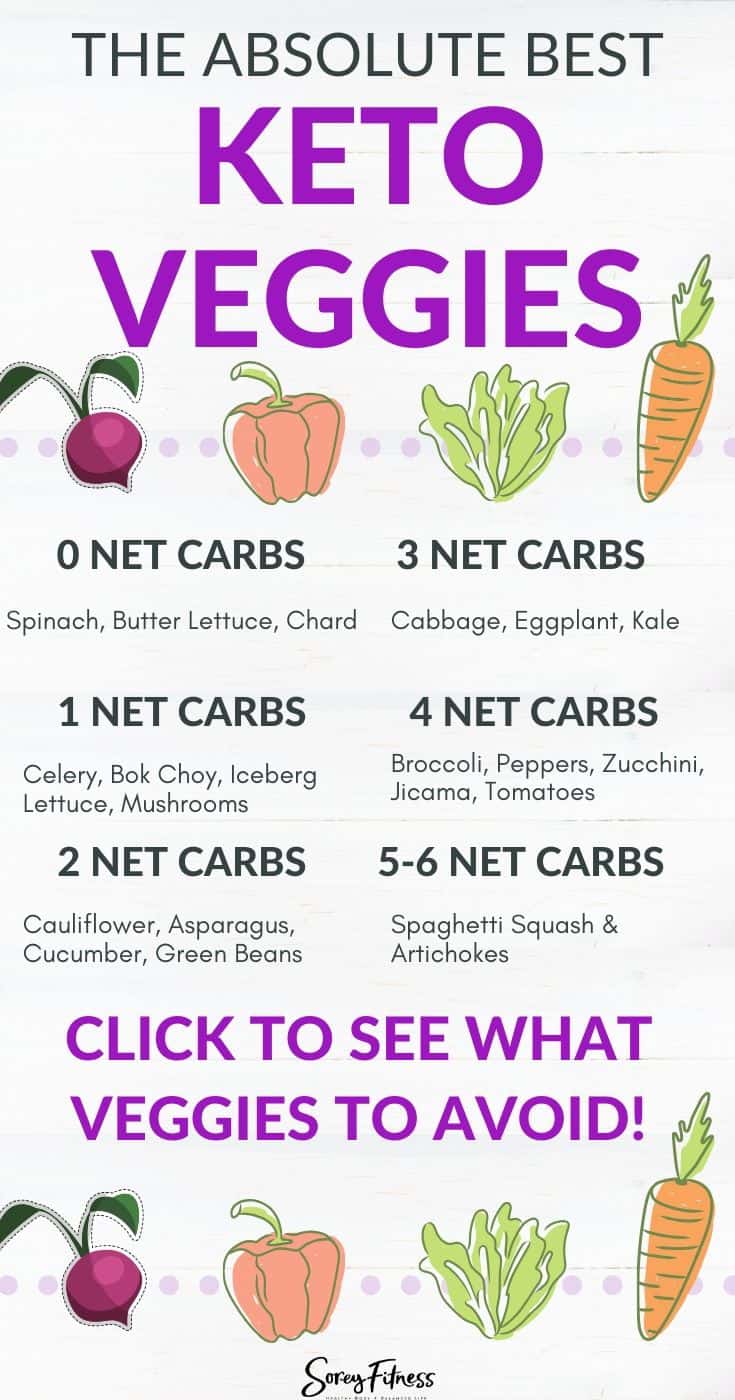





You have the wrong email address for me. My correct one is below
Thanks for letting us know! I just added your correct email address to our system! :)